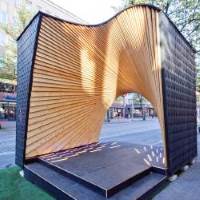VisualARQ 2 is a user inspired development plugin that includes a host of features requested by the VisualARQ community. The ultimate version includes vector output of selected display modes, the ability to define object styles from Grasshopper definitions and document wide custom parameters. These features are unique developments which drove the Asuni team to push the limits of what is possible in Rhino. You can learn more and become an expert watching this Top 5 tutorials:
If you are a beginner, or even if you are wondering why to use VisualARQ 2 for Rhino, we remember you that this new plugin introduces the “FlexibleBIM” concept by enabling new tools to develop powerful workflows. VisualARQ 2 improves the features and adds a lot of new functionalities requested and inspired by their own users. In this post you can watch the Top 5 tutorials to become an expert:
1.- Create and list Custom Parameters:
This video shows the option to create custom parameters (by Document, by VisualARQ object style or by object individually) and list them in tables.
2.- Parametric Furniture style from Grasshopper:
This tutorial shows how to create a parametric wardrobe using a VisualARQ “Furniture” object style, created from a Grasshopper definition.
3.- The Annotation object:
VisualARQ 2 adds the Annotation object, that can be created from blocks or from Grasshopper definitions, allowing custom dynamic objects. In this video you’ll see two examples.
4.- Hidden-Line Vector output 2D drawings in Rhino:
VisualARQ 2.0 adds the option to print the 3D model in vector output, either when showing it in Plan view, Section view or a 3D perspective view. This allows having real-time 2D drawings ready for printing or PDF documents.
5.- The Conceptual Display mode:
The new conceptual display mode to Rhino, suitable for a friendly visualization in Rhino while modeling, brings some advantages: improved custom lighting settings, silhouette contour for curved surfaces, thickness variation for contours or transparency control by layer.
You might also be interested in:


